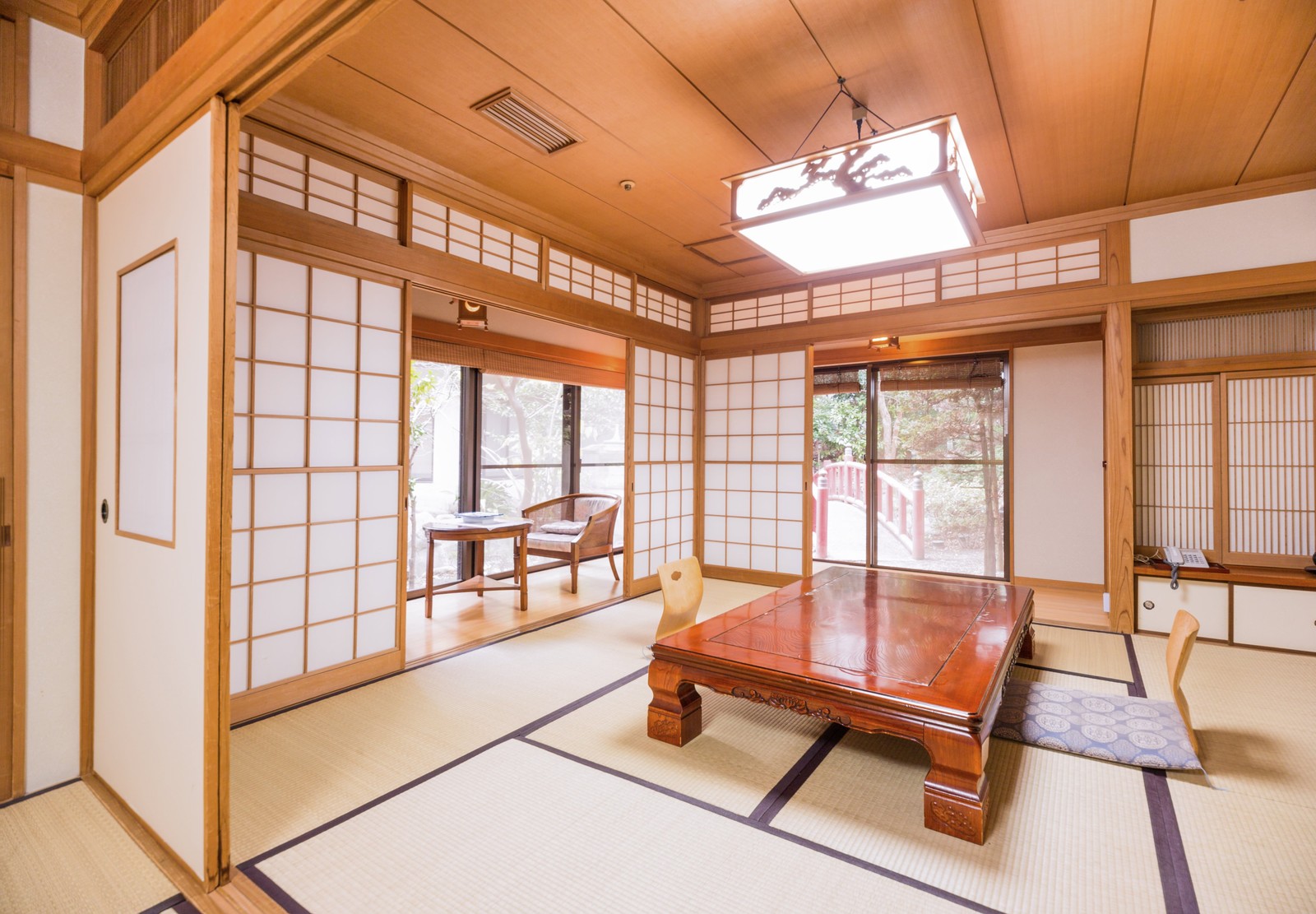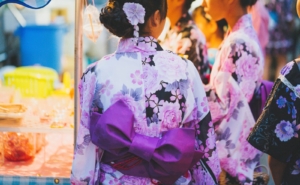For foreign travellers, staying at a ryokan (旅館) offers a valuable experience that allows them to directly engage with Japanese culture. Walking on tatami (畳) mats, sleeping on futons (布団), relaxing in an onsen (温泉), and enjoying kaiseki cuisine (会席料理) provide a full immersion in Japanese traditions and lifestyle.
Additionally, through the “omotenashi (おもてなし: hospitality)” of the ryokan staff, guests can experience Japan’s attentive service, the calm and tranquil atmosphere unique to Japanese spaces, and traditional manners, creating a memorable highlight of their journey.
What is the Definition of a Ryokan?
A ryokan is a traditional Japanese lodging that meets specific criteria set by Japanese accommodation laws. Generally, it includes traditional Japanese rooms with features like tatami mats, sliding doors (襖), and other uniquely Japanese interiors. Many ryokan also offer guests kaiseki meals (会席料理) or local specialty dishes for breakfast and dinner. While most ryokan include an onsen (温泉) or large communal bath (大浴場), some located outside of onsen areas might only have large baths instead of hot springs (温泉).
In a traditional Japanese room, futons are laid out on the tatami instead of beds (although some rooms may have beds). Ryokan staff often provide services such as arranging futons in the room and serving meals, all with a spirit of “omotenashi.” A typical ryokan experience is more homely and warm, aiming to offer a relaxing time for guests. While hotels also provide fine services, ryokan are unique for offering a distinctly Japanese experience.
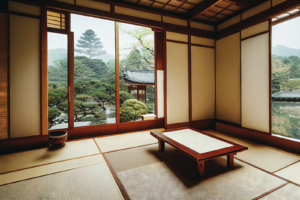
What is the Difference Between a Ryokan and an Onsen?
As mentioned earlier, a ryokan is a traditional Japanese inn, offering an authentic experience of Japanese-style lodging, often including tatami rooms, futons, and traditional meals. On the other hand, an onsen is a “hot spring” — naturally heated groundwater rich in minerals, believed to have relaxing and health benefits. Onsen areas are popular tourist destinations in Japan. While ryokan and onsen are different, “onsen ryokan” does exist. An onsen ryokan allows guests to enjoy hot springs on-site, but onsen facilities are not always attached to accommodations, and many day-use onsens are available.
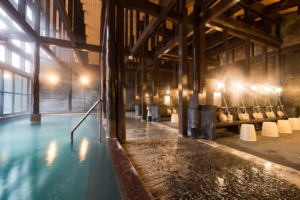
How Much Does a Stay at a Ryokan Cost?
The price for staying at a ryokan varies depending on its location, season, and quality, but typically ranges from 10,000 to 30,000 yen per night per person. Rates may increase with the addition of meals and room upgrades, with special plans including onsens or premium meals costing even more. Prices are usually higher during peak seasons, like year-end holidays and long weekends, and stays at luxury ryokan can exceed 50,000 yen per night. Checking for available plans and discounts before booking is recommended.
Can Solo Travelers Stay at a Ryokan?
Many ryokan accept solo travellers, although there may be a surcharge since pricing is often based on multiple guests sharing a room. In Japan, many years ago, solo travellers were often turned away from accommodations. However, solo travel has recently grown in popularity, and many inns have partnered with travel agencies to offer special package plans tailored for single travellers. Some places now even have rooms and plans specifically for solo guests, so you should be able to check whether a facility accepts solo reservations when booking.
Do Most Ryokan Have Onsens?
Many ryokan include onsen facilities, especially those located in hot spring regions, offering onsens as large communal baths or outdoor baths (露天風呂). However, ryokan in urban areas or smaller inns may not have onsen facilities. Since onsen availability varies by facility, it’s essential to confirm in advance if the onsen is a priority for the stay. Typical ryokan usually feature ample bathing facilities, even if they lack hot springs.
Do Most Ryokan Have Rooms with Private Outdoor Baths?
Staying in a room with a private outdoor bath offers a unique experience of enjoying an onsen in a private setting. These rooms are popular among guests seeking privacy, allowing them to enjoy the surrounding nature while bathing. However, not all ryokans offer rooms with open-air baths for guests to choose from, so it is essential to check when making a reservation.
Why Do Ryokan Costs Tend to Be Expensive?
One reason for higher ryokan rates is the comprehensive service provided. Typically, kaiseki meals prepared with local ingredients are served for both breakfast and dinner, and staff lay out futons in the rooms, offering an attentive service experience. Many ryokan also feature onsens, carefully designed rooms, landscaped gardens, and other amenities that create a relaxing environment.
How people perceive the cost of staying at a ryokan varies, but personally, I feel that the experience is well worth the price paid.
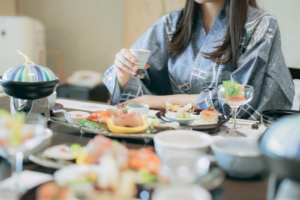
Are Cheap Ryokan Available?
Yes, there are ryokan that offer more affordable rates. Smaller, family-operated ryokan and urban business ryokan (ビジネス旅館) often provide more reasonable pricing. In some traditional hot spring towns, you can also find simpler ryokan with a warm, homely atmosphere. These ryokans often offer flexible plans, such as optional meals, making them accessible for a range of budgets.
Are There Different Types of Ryokan?
Although these establishments operate with official licenses as “ryokan,” they may be referred to by other names. Here are a few examples:
| Luxury Ryokan (高級旅館): | These establishments offer top-notch service, accommodations, and dining, ideal for travelers seeking a luxurious experience. Many rooms feature private outdoor baths, making the stay a special experience. |
| Onsen Ryokan (温泉旅館): | These are typically located in hot spring regions, surrounded by beautiful nature. Many feature outdoor baths made from natural stones and offer traditional Japanese cuisine made with local ingredients. |
| Small-Scale Ryokan (小規模): | These are usually family-run, smaller ryokan known for their homey ambiance. They may lack luxury amenities but offer a warm atmosphere and local cuisine. |
| Ryokan Hotels (旅館ホテル): | These blend ryokan and hotel features, such as traditional Japanese rooms, onsen facilities, and Japanese-style dining, with the convenience of a hotel. These are particularly popular among travellers seeking a traditional experience with modern comforts. |
| Kaiseki Ryokan (懐石旅館): | Known for exquisite kaiseki cuisine (懐石料理/会席料理), these ryokan provide an elegant atmosphere with individually served seasonal dishes, ideal for special occasions. |
| Station-Side Ryokan (駅前旅館): | Often located near train stations, these ryokan cater to business travellers with simple services and affordable rates. |
| Business Ryokan (ビジネス旅館): | These are budget-friendly accommodations geared toward business travelers, with simple rooms and basic amenities, often located near train stations and business areas. |
| Minshuku (民宿, technically not a ryokan) : | Family-run inns that offer a unique local experience with simple accommodations, sometimes including traditional meals prepared with local ingredients. |
Are There Ryokan for Vegetarians and Vegans?
There is an increasing number of ryokan that accommodate vegetarian and vegan guests. While dedicated vegetarian or vegan ryokan are rare, many offer meals tailored to dietary requests if notified in advance. Japanese cuisine, with its rich variety of vegetable-based dishes and traditional Buddhist cuisine (shojin ryori (精進料理)), makes it easier for ryokan to accommodate guests with dietary restrictions.
What is a Machiya?
For those interested in staying at a traditional ryokan, experiencing a machi-ya (町家) stay might also be appealing. Machiya are traditional Japanese townhouses, particularly common in Kyoto, that are often rented out in their entirety to guests. These wooden houses showcase traditional Japanese architectural styles and were historically used as both homes and shops by merchants and craftsmen.
Recently, renovated machiya have become popular accommodations for visitors seeking an authentic Japanese experience with a historical ambiance. In Kyoto, in particular, there’s been an increase in short-term rental options for machiya, with many offering foreign-language support and easy online booking.
Travel companies such as Airbnb, Booking.com, Airtrip, and AJ Interbridge offer machiya stays specifically for international travelers. These companies provide machiya rental plans in areas like Kyoto, Kanazawa, and Takayama, ensuring foreign-language services to enhance the experience for overseas guests. Many of these machiya are conveniently located near popular tourist spots, making them increasingly popular as accommodation options. On Airbnb, for example, traditional machiya stays are highly sought after, as they allow guests to experience an authentic Japanese lifestyle while also providing modern comforts.
